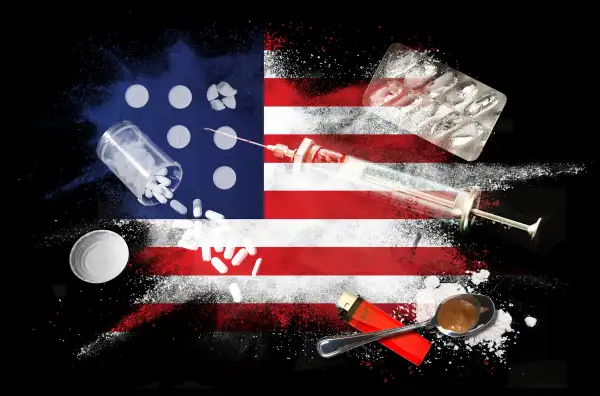Here's What It Would Cost to Fix the Opioid Crisis, According to 5 Experts

Some 50,000 Americans died from an opioid overdose in 2016, according to government estimates. That’s 137 people a day, or roughly one death every 12 minutes from prescription painkillers, heroin or the synthetic opioid fentanyl.
You can’t put a price tag on the emotional devastation that the opioid epidemic has wrought on families from Portland to Pittsburgh. But quantifying the economic impact of the crisis would help in marshaling resources to fight it.
Last week, President Donald Trump’s Council of Economic Advisers estimated that the opioid drug epidemic cost the country $504 billion in 2015—in terms of lost lives, lost productivity, health care, treatment, criminal justice and other costs. Altarum, a nonprofit research and consulting institute dedicated to improving health and health care, arrived at a cost estimate of $95 billion for 2016 using a different methodology. “Regardless of whether it’s $504 billion or $95 billion, these costs are far higher than what we’re spending on prevention and treatment,” says Corey Rhyan, senior analyst at Altarum’s Center for Value in Health Care.
Last month, the Trump administration declared the opioid crisis a nationwide public health emergency. But neither that declaration nor last week’s report directed any new funding to the epidemic. Hogan Gidley, deputy While House press secretary, said in an email statement that the administration “will continue discussions with Congress on the appropriate level of funding needed to address this crisis.”
In the meantime, Money asked five experts to describe the resources needed to put a dent in the crisis.
Dr. Francis Collins
Director, National Institutes of Health
"$500 million a year for research alone"
"The part that I can talk about is science, and how it can help us out of this terribly difficult public health emergency," says Dr. Francis Collins, director of the National Institutes of Health.
The NIH currently spends about $116 million a year on opioid use disorder research, mostly through the National Institute on Drug Abuse, one of the NIH's 27 institutes and centers. To accelerate the agency's various research initiatives, Collins says, the NIH would need four or five times the current spending—or roughly $500 million a year. (The NIH's annual budget is set by Congress, although the organization's directors then decide what priorities to fund within their budget.)
The NIH has three main research priorities on opioids, Collins says:
• Developing medication-based addiction treatments that are both longer-lasting and easier to administer than the current options.
• Developing an antidote to overdoses that can combat fentanyl, which is more potent than natural opioids and has on occasion proven resistant to the current antidote, Narcan.
• Developing effective but non-addictive pain medications as an alternative to opioids.
The agency is working with private sector pharmaceutical firms and also with the Food and Drug Administration to develop and speed the approval of new medications. "It is impressive to see the determination of all parties," Collins says. "It will be expensive, but compared to the figure that the Council of Economic Advisers put out, $500 million is just 0.1% of $500 billion."
Dr. Andrew Kolodny
Co-director of Opioid Policy Research, Heller School for Social Policy and Management, Brandeis University
"$60 billion over 10 years"
We need to prevent more people from becoming addicted, and we need to give those who are addicted adequate treatment, Kolodny says—and yet "we're failing on both fronts." As people using opioids develop a tolerance for the drug, he explains, they eventually rely on it to function normally. When people first start using, opioids deliver an enjoyable endorphin rush—but later on, the drugs simply deliver what they need to get through the day without feeling sick. To break their dependency, people need medical help tapering off opioids.
The first-line treatment for patients who crave opioids is buprenorphine, and if it's not readily available they'll continue taking pain pills or heroin. The problem is, there aren’t nearly enough treatment facilities to help people. It would cost roughly $6 billion to create a treatment facility in each of the country’s 3,000 counties—or roughly $2 million per center, Kolodny says, with that money mostly going toward ongoing staffing needs. “We need a commitment to do it over the next 10 years,” Kolodny says, for a total of $60 billion.
Sara Howe
CEO, Illinois Association for Behavioral Health
More than $450 million a year for prevention and treatment—just in Illinois
Putting a dent in this crisis goes well beyond treatment, Howe argues—it means investing in a full continuum of services, from prevention to treatment and recovery support. Unfortunately, she says, Illinois has seen a steady decline in funding for prevention and treatment services just as the crisis has been worsening.
For instance, in state fiscal year 2012, the state's addiction system received about $240 million from federal block grant funds, state general revenue funds and Medicaid. In fiscal year 2016, the system received less than $150 million from state and federal funds. "This is clearly going in the wrong direction," Howe says.
Illinois is currently treating less than 5% of the estimated need for services, Howe says, and its goal is to meet at least 15% of the need. That means the state would need at least triple its current allocation just for treatment. That doesn't include prevention, which is "by far the most cost-effective solution," Howe says, and which is also under-funded. While Howe argues that it's hard to come up with an exact price tag for stopping the wave of opioid addiction, she says it's pretty clear the current trend—that is, funding cuts—will only further erode the system and devastate more lives.
Bob Casey
U.S. Senator (D-Pennsylvania)
$45 billion over 10 years
In their plan to repeal and replace the Affordable Care Act earlier this year, Senate Republicans included $45 billion to combat the opioid crisis. The funding was intended as a kind of substitute for Medicaid, which pays for 44% of opioid-related ER visits, according to an Altarum analysis, and which would have been slashed under the repeal plan.
While that plan fizzled, Sen. Casey and some colleagues revived the $45 billion figure recently in the Combating the Opioid Epidemic Act, which has been referred to the Senate's Committee on Health, Education, Labor and Pensions. Their approach would preserve Medicaid and would invest the money in state efforts over 10 fiscal years, plus spend another $252 million (over five fiscal years) on pain and addiction research.
“I recognize that tackling this crisis will take more,” Casey said in an emailed statement—"but I believe $45 billion is a good place to start, given Republicans’ recent support of this amount."
Andrew Kessler
Principal, Slingshot Solutions, a Washington, D.C.-based consulting firm
Trillions of dollars over the long term
The country has been battling diabetes, cancer, HIV/AIDS and other diseases for decades—if not centuries—at a cost of trillions of dollars, Kessler says—and none of them have yet been conquered.
Instead of arriving at a precise number for combating the opioid epidemic, he argues, it is more practical to look at what can be done to get this disease under control, so more people can live healthy lives while fighting it. That means investments in research, prevention, treatment, and recovery—all for the long term.
"This is a chronic disease that has been around for a millennium, but Washington is acting as if there should be an acute solution," Kessler says. "There is not."
